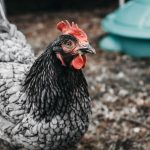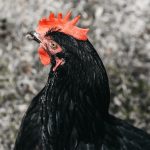Nomadic lifestyle refers to a way of life where communities or groups of people move from one location to another in search of resources essential for their survival, such as pasture and water. This lifestyle is practiced by various indigenous communities worldwide, including the Maasai in East Africa, the Mongols in Central Asia, and the Bedouins in the Middle East. Animal husbandry is a key aspect of nomadic life, with livestock playing a crucial role in the sustenance and cultural practices of these communities.
While chickens are not typically associated with nomadic lifestyles, some nomadic groups do keep small livestock, including poultry. However, larger animals such as cattle, sheep, goats, and camels are more commonly associated with nomadic herding practices. These animals provide food, milk, and other resources, and often serve as a form of wealth and cultural significance.
In nomadic communities that do keep chickens, these birds may serve multiple purposes, including providing eggs and meat for consumption, as well as potentially being used in trade or cultural practices. The methods of caring for and transporting chickens in a nomadic setting would need to be adapted to the mobile lifestyle, considering factors such as housing, protection from predators, and access to food and water. The specific practices related to chicken-rearing in nomadic communities can vary greatly depending on the region, culture, and environmental conditions.
It is important to note that the role and importance of chickens in nomadic lifestyles may differ significantly from one community to another, and generalizations should be avoided without specific cultural and historical context.
Table of Contents
- 1 Importance of Chickens for Nomadic Communities
- 2 Methods of Housing and Protecting Chickens on the Move
- 3 Feeding and Nutrition for Nomadic Chickens
- 4 Utilization of Chicken Products in Nomadic Life
- 5 Breeding and Reproduction of Chickens in Nomadic Settings
- 6 Cultural and Spiritual Significance of Chickens for Nomadic Peoples
- 7 FAQs
Key Takeaways
- Nomadic lifestyle involves constant movement and requires adaptable practices for chicken rearing.
- Chickens are essential for nomadic communities, providing a sustainable source of food and income.
- Portable and protective housing is crucial for keeping chickens safe during nomadic journeys.
- Nomadic chickens require a balanced diet to ensure their health and productivity.
- Nomadic communities utilize every part of the chicken for food, clothing, and cultural rituals, highlighting the importance of these animals in their lives.
Importance of Chickens for Nomadic Communities
Practical Uses of Chickens
In addition to being a source of protein through their meat and eggs, chickens offer a variety of practical benefits. They provide feathers for clothing and bedding, as well as bones that can be used to create tools and ornaments. Moreover, chickens serve as a form of wealth and are often used in trade and exchange within nomadic societies.
Cultural and Spiritual Significance
The ability to rear and maintain a healthy flock of chickens is a symbol of prosperity and stability within nomadic communities. Chickens hold significant cultural and spiritual importance, often featuring in traditional ceremonies and rituals. They represent fertility, abundance, and protection, and are deeply ingrained in the cultural identity of nomadic peoples.
Spiritual Qualities and Beliefs
Chickens are believed to possess spiritual qualities, and are used in divination and healing practices. As such, their presence in nomadic communities extends beyond mere sustenance, and is deeply intertwined with their cultural identity and belief systems.
Methods of Housing and Protecting Chickens on the Move

Nomadic communities have developed various methods of housing and protecting their chickens as they move from one location to another. Portable chicken coops or pens are commonly used to provide shelter and security for the birds while allowing them to graze freely. These coops are often made from locally available materials such as wood, bamboo, or animal skins, and are designed to be lightweight and easy to transport.
In addition to portable coops, nomadic communities also employ traditional knowledge and practices to protect their chickens from predators and harsh environmental conditions. Dogs are often trained to guard the flock, while natural barriers such as thorn bushes or fences made from branches are used to create enclosures for the birds. Furthermore, the movement patterns of nomadic communities are often dictated by the availability of suitable grazing areas for their animals, ensuring that their chickens have access to fresh food and water while on the move.
Feeding and Nutrition for Nomadic Chickens
Feeding and nutrition are crucial aspects of chicken rearing in nomadic settings, as access to commercial feed may be limited or non-existent. Nomadic communities rely on natural foraging and scavenging behaviors of chickens to supplement their diet with insects, seeds, and vegetation found in their surroundings. This not only reduces the cost of feeding but also ensures that the chickens have a varied and balanced diet.
In addition to foraging, nomadic communities also supplement their chickens’ diet with household scraps, grains, and other food items that are readily available. Traditional knowledge about local plants and herbs is often utilized to provide medicinal supplements for the birds, ensuring their health and well-being without relying on modern veterinary practices. The ability to sustain their chickens on natural resources reflects the resourcefulness and adaptability of nomadic communities in providing for their animals even in challenging environments.
Utilization of Chicken Products in Nomadic Life
The products derived from chickens play a vital role in the daily life of nomadic communities. Meat and eggs are a valuable source of protein and nutrients, providing sustenance for the community members, especially during times when other food sources may be scarce. Feathers from chickens are used to make clothing, blankets, and headdresses, providing insulation and protection from the elements.
Bones from chickens are utilized to make tools such as needles, awls, and ornaments, showcasing the resourcefulness and ingenuity of nomadic peoples. Furthermore, chicken products are often used in trade and exchange within nomadic communities, serving as a form of currency or barter. The surplus meat, eggs, feathers, or bones can be traded for other goods or services, strengthening social ties and economic relationships within the community.
The utilization of chicken products reflects the multi-faceted role that chickens play in the livelihoods of nomadic peoples, providing not only sustenance but also economic opportunities and cultural significance.
Breeding and Reproduction of Chickens in Nomadic Settings

Traditional Breeding Practices
Nomadic communities rely on traditional breeding practices to select for desirable traits in their chickens, such as disease resistance, egg production, and meat quality. Through generations of observation and selective breeding, these communities have developed a deep understanding of chicken behavior and genetics, resulting in breeds that are well adapted to their specific environment and lifestyle.
Brooding and Incubation Methods
In addition to natural breeding, nomadic communities also employ careful management of brooding hens and incubation of eggs to ensure a steady supply of chicks throughout the year. They use traditional methods such as broody hens to hatch eggs or create makeshift incubators using natural materials to maintain the flock size and replace aging birds.
Sustainability and Long-term Viability
The ability to sustainably breed and reproduce chickens is crucial for the long-term viability of poultry rearing within nomadic settings. By employing these traditional practices, nomadic communities can maintain a healthy and sustainable flock, ensuring a reliable source of food and income for generations to come.
Cultural and Spiritual Significance of Chickens for Nomadic Peoples
Chickens hold deep cultural and spiritual significance for nomadic peoples, playing a central role in their traditions, beliefs, and rituals. Chickens are often used in ceremonies marking important life events such as births, weddings, or funerals, symbolizing fertility, prosperity, and protection. The crowing of roosters at dawn is considered an auspicious sign in many nomadic cultures, heralding the start of a new day and bringing good fortune to the community.
Furthermore, chickens are believed to possess spiritual qualities and are used in divination practices to seek guidance or insight into future events. The sacrifice of chickens is also a common ritual in many nomadic communities, offering thanks to ancestral spirits or seeking their favor for important endeavors. The cultural and spiritual significance of chickens underscores their integral role in the identity and worldview of nomadic peoples, shaping their beliefs, values, and social interactions.
In conclusion, the rearing of chickens is an essential aspect of the nomadic lifestyle, providing sustenance, economic opportunities, cultural significance, and spiritual connection for these communities. The methods of housing and protecting chickens on the move reflect the resourcefulness and adaptability of nomadic peoples in providing for their animals even in challenging environments. Feeding and nutrition practices showcase traditional knowledge about local resources and medicinal supplements that ensure the health and well-being of the flock.
The utilization of chicken products reflects the multi-faceted role that chickens play in the livelihoods of nomadic peoples, providing not only sustenance but also economic opportunities and cultural significance. The breeding and reproduction of chickens are essential for maintaining a healthy and sustainable flock within nomadic communities while upholding traditional breeding practices that select for desirable traits. Finally, the cultural and spiritual significance of chickens underscores their integral role in the identity and worldview of nomadic peoples, shaping their beliefs, values, and social interactions.
If you’re interested in learning more about how nomads kept chickens, you might want to check out this article on 10 essential tips for building a chicken coop. It provides valuable information on creating a suitable environment for chickens, which would have been crucial for nomads traveling with their flocks.
FAQs
What are nomads?
Nomads are people who move from place to place with no permanent settlement, often in search of food, water, and grazing land for their livestock.
Why did nomads keep chickens?
Nomads kept chickens for their eggs, meat, and feathers. Chickens provided a reliable source of food and materials for nomadic communities.
How did nomads care for their chickens?
Nomads cared for their chickens by providing them with shelter, feeding them grains and scraps, and protecting them from predators. They also allowed the chickens to roam freely during the day to forage for food.
What did nomads feed their chickens?
Nomads fed their chickens a diet of grains, seeds, insects, and kitchen scraps. Chickens were also allowed to forage for food on their own, which supplemented their diet.
How did nomads transport their chickens?
Nomads transported their chickens by using specially designed cages or baskets that could be attached to their pack animals, such as camels or horses. This allowed them to easily move their chickens from one location to another.
Did nomads use chickens for trade?
Yes, nomads often used chickens for trade with other communities. Chickens were valuable commodities and could be exchanged for other goods or services.
Meet Walter, the feathered-friend fanatic of Florida! Nestled in the sunshine state, Walter struts through life with his feathered companions, clucking his way to happiness. With a coop that’s fancier than a five-star hotel, he’s the Don Juan of the chicken world. When he’s not teaching his hens to do the cha-cha, you’ll find him in a heated debate with his prized rooster, Sir Clucks-a-Lot. Walter’s poultry passion is no yolk; he’s the sunny-side-up guy you never knew you needed in your flock of friends!







